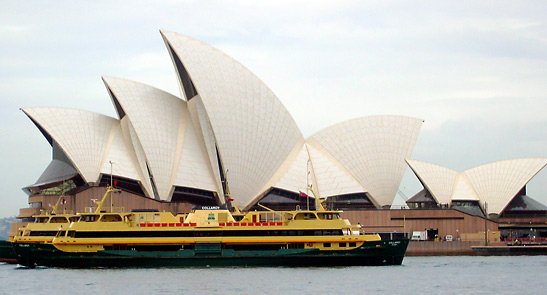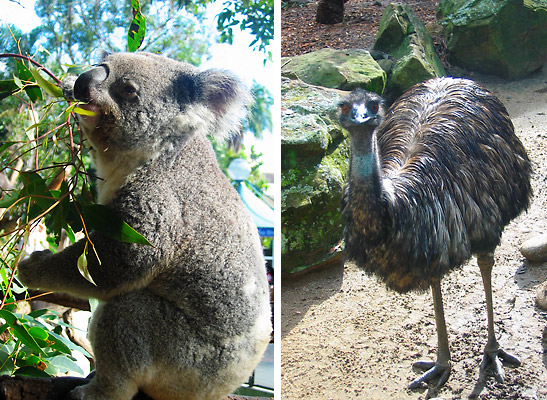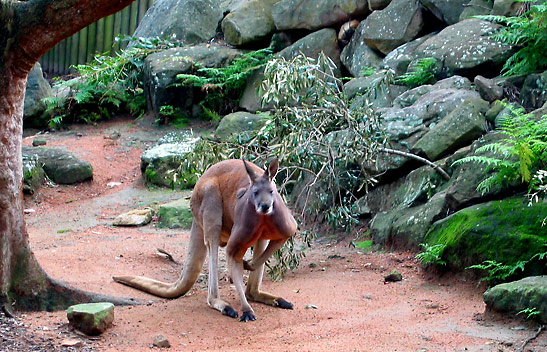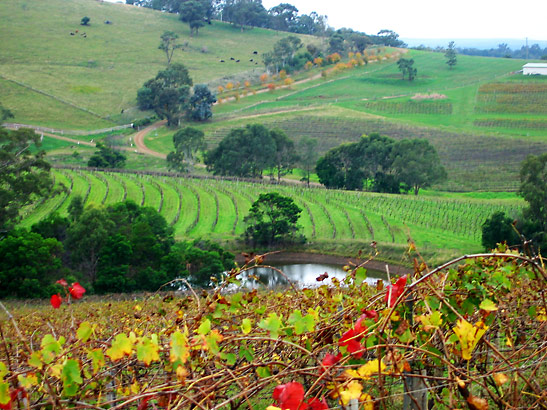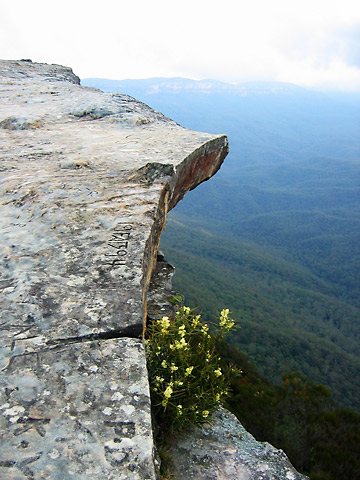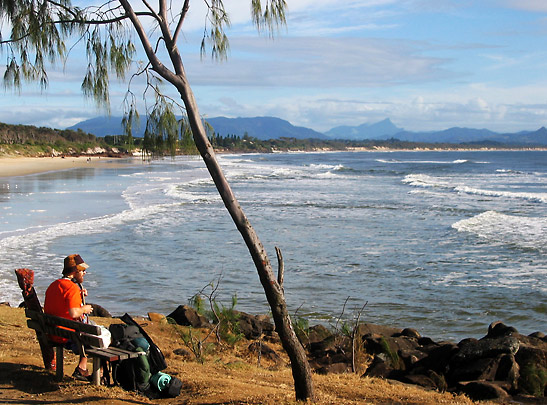 |
 |
|
 |

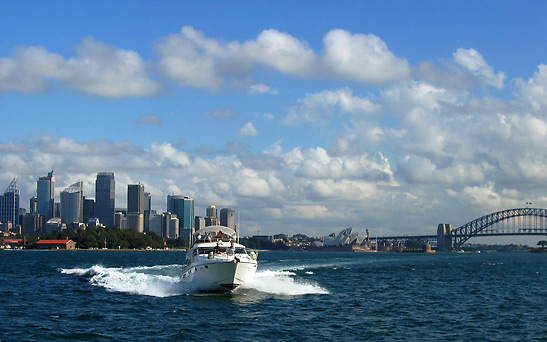
Mullimbimby Madness and Laughing
Kookaburras
The plaintiff song of the Butcherbirds, the squawking of the red bellied Rosella Parrots and cockatoos in the shedding gum trees, the childlike crying of the Green Catbird, cackling of the Bush Turkeys, melodious tunes of black and white magpies, thrushes, and yellow beaked mynahs as they fed on the nectar of the bottle brush were all disturbed by the lunatic cacophony of the plump and amusing Laughing Kookaburras. I woke to winter with a smile. The strangely formed menagerie of land-bound hoppers, burrowers, birds, eucalyptus munchers and mixed breed creatures were dumb, satisfied to leave the morning air to the high-flying vocalists and unable or unwilling to join the chorus. I was in New South Wales in the land down under and flora, fauna, time and season were out of joint. Lying on the southeast coast of Australia, the state enjoys a Mediterranean climate (ranging between 40 and 75 degrees in winter), the country’s largest population (7 million of a total 30 million) and fosters sophisticated and alternative lifestyles. Its capital is Sydney, the oldest and most beautiful city in the country (although Melbournians will dispute this claim, I don’t think they have an argument). Situated on one of the world’s great harbors, its shore is adorned by a massive bridge that gates and spans the seaway entrance and the revolutionary architecture of the Opera House sails onto the water edge, ringed by pristine city buildings and million dollar homes.
It was the countries first colony, established January 26, 1788 when the fleet commanded by Captain Arthur Phillip landed in Sydney Harbour with about 750 convicts and 250 officials and their families to settle and claim the continent for Great Britain. Following the Revolutionary War the U.S. had rejected British prisoner settlement in the south, so now it was off to the land that Captain Cook had discovered with its unwanted cargo. As in American history, the indigenous population would suffer deeply from this incursion, but that is always the cost of exploration and settlement. The event is commemorated every year as “Australia Day” and celebrated in the blistering heat of January 26, most heavily in the “convict city” of Sydney. I arrived in Sydney on the countries signature airline, Qantas, which has non-stop direct flights from Los Angeles and San Francisco that take about fifteen hours. You cross the international dateline and lose a day, reason enough to extend your visit. I booked my tour through Virtuoso, which specially selects hotels, restaurants and attractions for its clients. They have a working relationship with the Australian Tourism Office and receive special amenities and offers, which they pass along to travelers. Some Virtuoso hotel recommendations in Sydney include the InterContinental, Four Seasons, Park Hyatt and The Observatory. All have great spas, pools and restaurants, but The Observatory has the top Sommelier in Australia, Christian, who matched and explained some beautiful Australian wines with my dinner. The best meal I had was prepared by the two Michelin star chef Hugh Whitehouse at Darley’s Restaurant in Lilianfels Blue Mountains Resort and Spa. In Sydney I got a behind-the-scenes tour of the Opera House and dined in the employee restaurant. English artist/musician Brian Eno had just installed his evening light show, which flashed numerous images on the outside sails of the Opera House, and he filmed the event for future use. I sped around Sydney Harbour on Sea Sydney Cruises 52-foot motor yacht, had lunch in a quiet bay aboard ship, docked at the enormous Taronga Zoo and met koalas, emus, kangaroos, Tasmanian Devils and most of the other odd creatures that inhabit this lost world of the animal phylum. There are more peculiar and lethal animals in Australia than anywhere else.
The day I arrived in Sydney I had breakfast and lunch in Bondi Beach, the great surfing Mecca, and met two young American women who were waitressing at Nick’s and Trio Café on one-year work visas. It’s a government program for 18-30 year old students to take a “Gap” year from college and experience life in Australia and be able to make a little money (very little, Australians usually don’t tip). Travelers on a shorter timetable should also know that they need to purchase a three-month visa from the Australian government for $25 before entering the country. Australians love their coffee and drink it more than tea. Some coffee shop terms to know if you want to succeed as an Australian barista on the work visa program: “Long black” is espresso with water, “flat white” espresso with frothy milk. For Sydneysiders the wine country means Hunter Valley, a two-hour journey to the north. Grab a copy of the Hunter Valley Wine Country Visitor Guide from the Tourist Center to check out some of the 140 vineyards, primarily producing Shiraz and Semillon. Be wary if you are imbibing in wine country. Australians drive on the left side of the road. Some I visited were Audrey Wilkinson, Hungerford Hill, Lindemans, which also has vineyards in the Barossa, McGuigan Cellars, Wyndham Estate, which introduced Shiraz to Australia back in the late 1800s, and my favorite Pepper Tree Estate. On the vineyard grounds are Robert’s Restaurant, The Convent guesthouse and Tower Lodge.
For a glass of beer in wine country visit the Bluetongue Brewery and try their tasting. My favorite beer in Australia was Coopers, nice and hoppy. For local cheese sample across the street at Binnoire Dairy. In the Hunter Valley I stayed on the expansive grounds of Peppers Guest House, on which wild kangaroos also resided and Internet usage was free.
On my journey north to the Hunter Valley, I passed through bush country to visit the World Heritage Site of the Blue Mountains. These intriguing formations gain their color from vapors rising off the eucalyptus forest. There are spectacular views from the lookout ledge, but this is not the best place for an acrophobe, the stone platform plunges straight down over 1,000 feet. Byron Bay, population 9,000, was my favorite area in New South Wales. The most easterly town in Australia, it lies two hours north of Sydney by plane at the edge of a rain forest. It’s a surfer’s paradise and artist colony. Many of the artist’s workplaces are also shops. Make sure to visit the local glassworks and travel into the hills to meditate and renew at the alternative lifestyle Crystal Castle retreat. In the 60s and 70s the counterculture cultivated high-test “Mullimbimby Madness” in these hills and there’s a little bit of that culture still around. Lots of lively pubs and restaurants in Byron Bay keep the town rocking. The best restaurant is Dish and Paul Hogan opened the town’s largest bar. On occasion you’ll also see a celebrity like Paul, Gweneth Paltrow, Russell Crowe and Olivia Newton John, who own homes in the area.
I stayed at the Byron at Byron Resort and Spa, built inside the coastal rainforest. They offer several spa treatments and have a lovely pool and restaurant, where I had dinner with the town Mayor and proprietors Lyn and John Parche my final night. This is a spectacular property that you must see and hear, especially as I did, at 6 a.m. when the morning choir begins, no matter the season. For information on travel accommodations, special events, sightseeing, dining options, bargain hunting, etc., www.australia.com, www.sydney.com and www.virtuoso.com. Related Articles: |
|
Feedback for South of the Border Wine Country Hello John – I enjoyed reading your article. I live in
La Bufadora and have friends visiting next week, so you have given me some good
tips on where to go in our wine country. We have always called Cetto –
L.A. (like Los Angeles) Chet-o and it might have been worth mentioning that
it is actually Italian in origin. Also, I don't know about when visiting the
Valle, but when in town, it is better to have pesos than dollars. Right now
the rate is approx. 11.70 for each dollar. Just sayin' and like I said good
article!
Hi, We here at Country Living Magazine are working on a story about hotels around the US. We would like to feature the Paso Robles Inn. I have to find photos to go along with the story. I was wondering if you could please send me any images of the hotel. This can be anything from the rooms to the food! All images can be submitted low res and if selected I will ask for hi rez later. Also, if you know of any photographers that have photographed the hotel can you please give me the contact info? Thank you so much! --- Will Morel, Assistant Photo Editor, Country Living Magazine, New York, NY
I am looking forward to my "silver" years, which in my case, will be the years (if fate is good to me) that I will finally be traveling. New Zealand is at the top of the list - I have always been drawn to it. --- Sandra Mines, Seattle, WA
Yes, was a fun city. Bad wine though. --- Bo, Portland, OR
|
This site is designed and maintained by WYNK Marketing. Send all technical issues to: support@wynkmarketing.com

|






